treasurehuntr2
Jr. Member
Hi fellow treasure hunters! Haven't posted for awhile, and hope all are well. My curiosity is killing me about these chairs I have recently gotton. It is VERY difficult for me to determine their age, where they originated, etc. and I was wondering if any of my friends here on Tnet would happen to have any insight, or information they could share with me on them. I hope the pictures will do some justice, but to actually see, and to feel them is a trip!!! The animal skin is so hard and tight, it's amazing. The seats are almost like a drum! Only one spot on one of them has moved a little from the original place it was tacked down. The tack nails are very old, and brown rust has begun to surround them on the skin. I don't even know what kind of wood it is, but it is hard and still in strong. There is alot of strange markings all over the chairs and various places look like there was something maybe burnt in to wood, but no signature per se. Several places look like there's some kind of words or symbols that are very very small. They are not in english and almost appear hieroglyphic.
The design of the chair is simple and square fitted together from one piece to the next with like a 2 in. by 1/2 in. insertion that doesnt appear to be like a "peg".
They just appear to me to be very very very old. They were put together simply and WELL! And at least in my estimation over 150 years ago,perhaps even many more than that. Thanks so much for any info in advance!!!!
The design of the chair is simple and square fitted together from one piece to the next with like a 2 in. by 1/2 in. insertion that doesnt appear to be like a "peg".
They just appear to me to be very very very old. They were put together simply and WELL! And at least in my estimation over 150 years ago,perhaps even many more than that. Thanks so much for any info in advance!!!!
Attachments
-
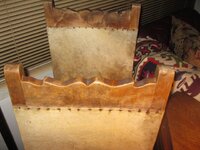 IMG_6460.JPG68.1 KB · Views: 491
IMG_6460.JPG68.1 KB · Views: 491 -
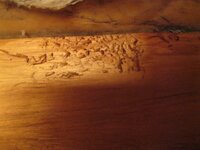 IMG_6492.JPG47.4 KB · Views: 606
IMG_6492.JPG47.4 KB · Views: 606 -
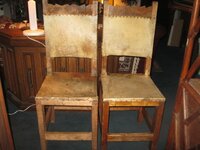 IMG_6474.JPG64.7 KB · Views: 540
IMG_6474.JPG64.7 KB · Views: 540 -
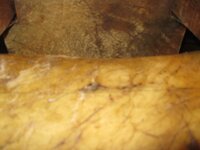 IMG_6484.JPG43.3 KB · Views: 548
IMG_6484.JPG43.3 KB · Views: 548 -
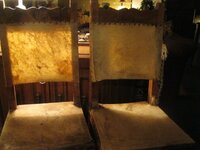 IMG_6478.JPG58.2 KB · Views: 513
IMG_6478.JPG58.2 KB · Views: 513 -
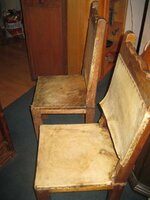 IMG_6476.JPG56 KB · Views: 510
IMG_6476.JPG56 KB · Views: 510 -
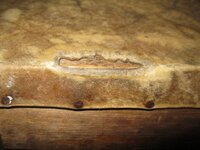 IMG_6465.JPG64.1 KB · Views: 486
IMG_6465.JPG64.1 KB · Views: 486 -
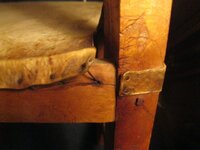 IMG_6463.JPG52.1 KB · Views: 475
IMG_6463.JPG52.1 KB · Views: 475 -
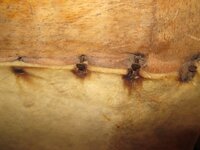 IMG_6461.JPG62.6 KB · Views: 482
IMG_6461.JPG62.6 KB · Views: 482 -
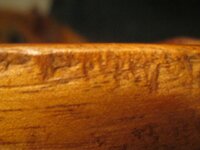 IMG_6493.JPG41.3 KB · Views: 591
IMG_6493.JPG41.3 KB · Views: 591 -
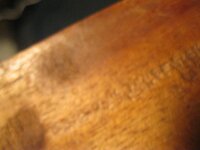 IMG_6494.JPG41.8 KB · Views: 815
IMG_6494.JPG41.8 KB · Views: 815 -
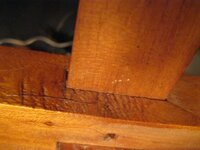 IMG_6495.JPG49.2 KB · Views: 948
IMG_6495.JPG49.2 KB · Views: 948


 The wood looks strong. Can we see the markings?
The wood looks strong. Can we see the markings?



